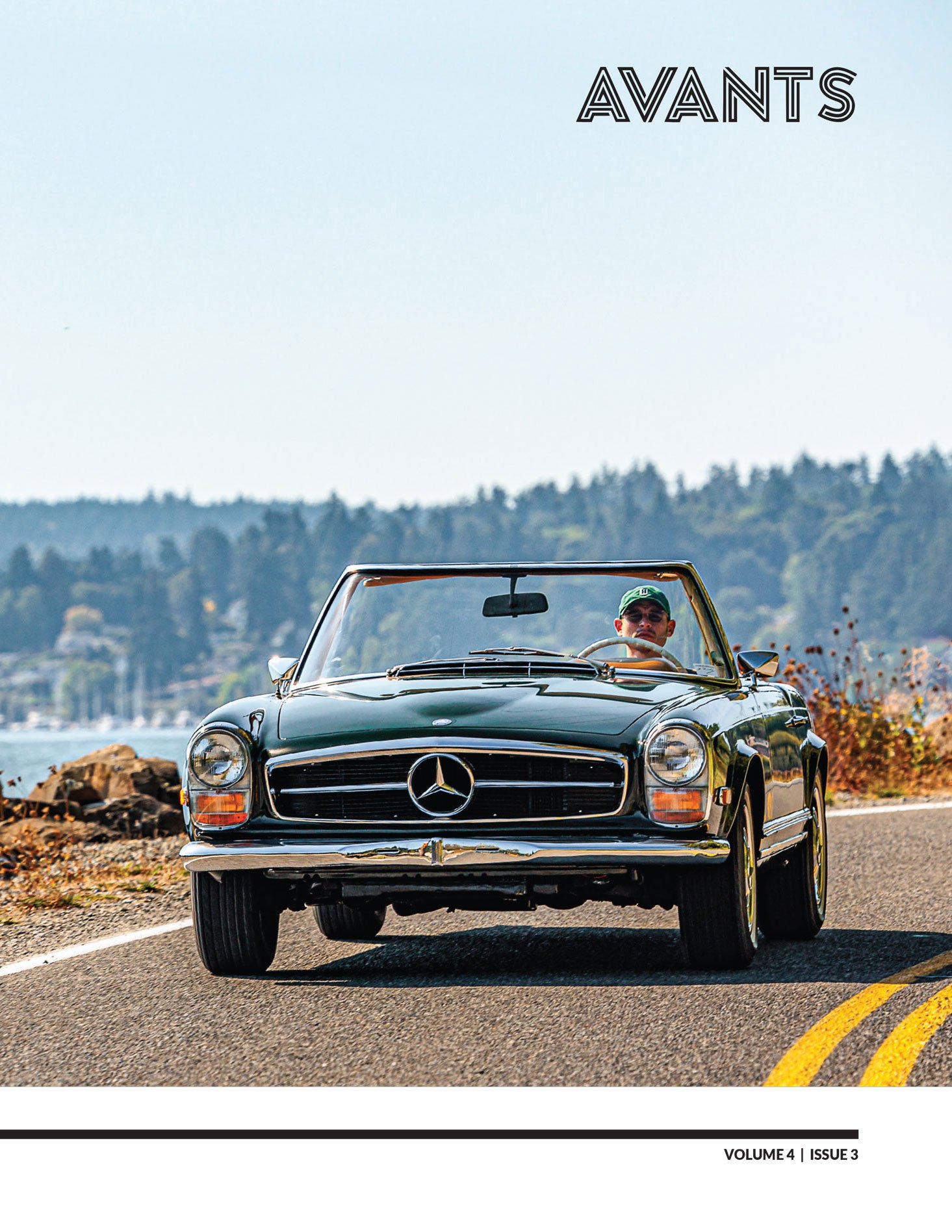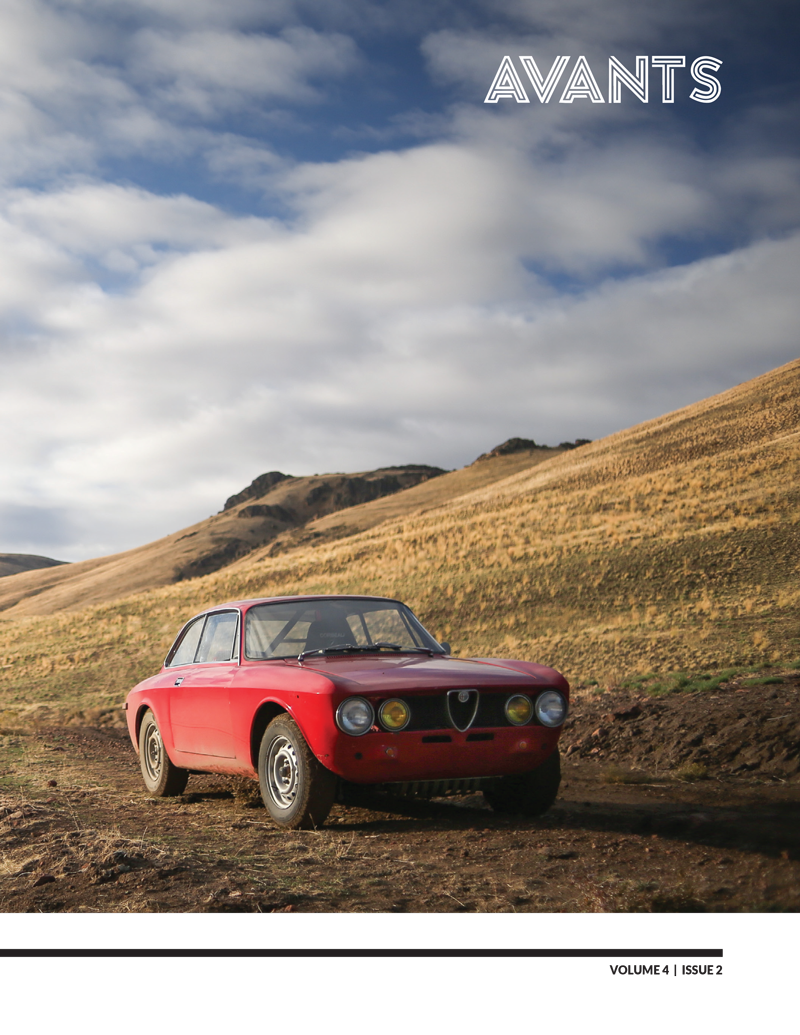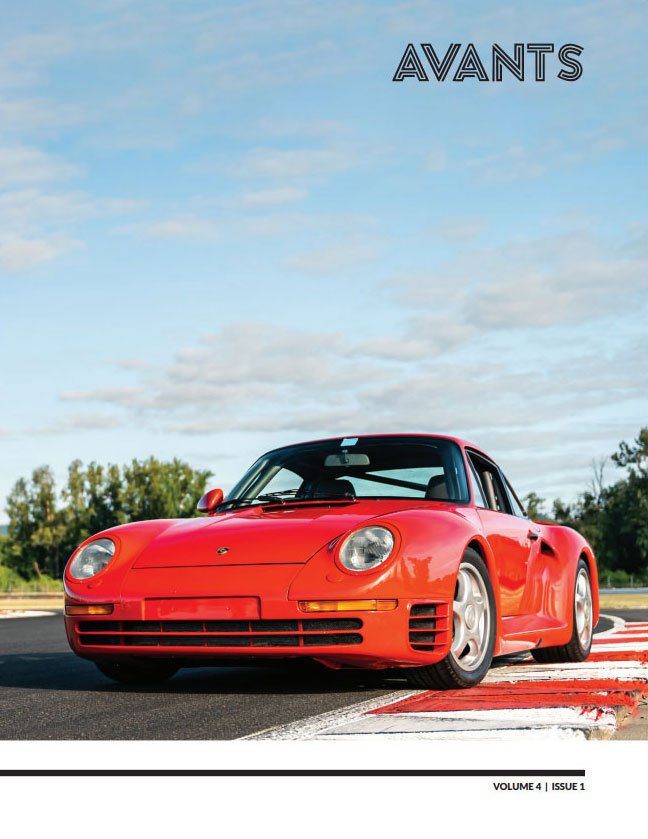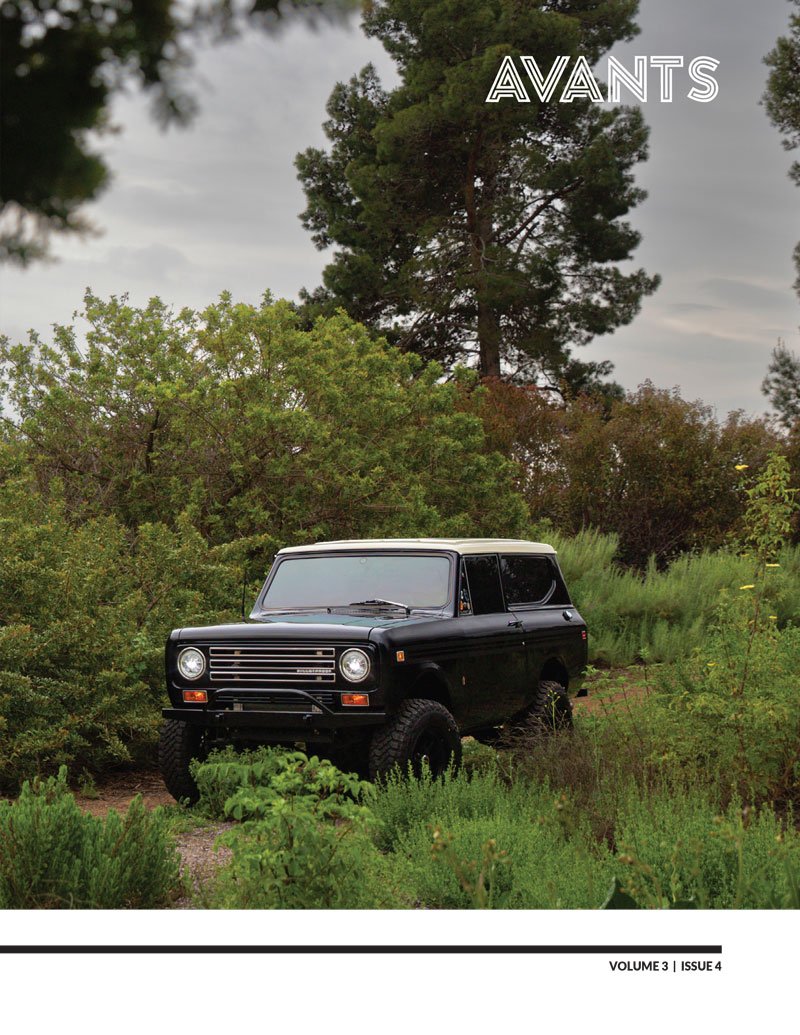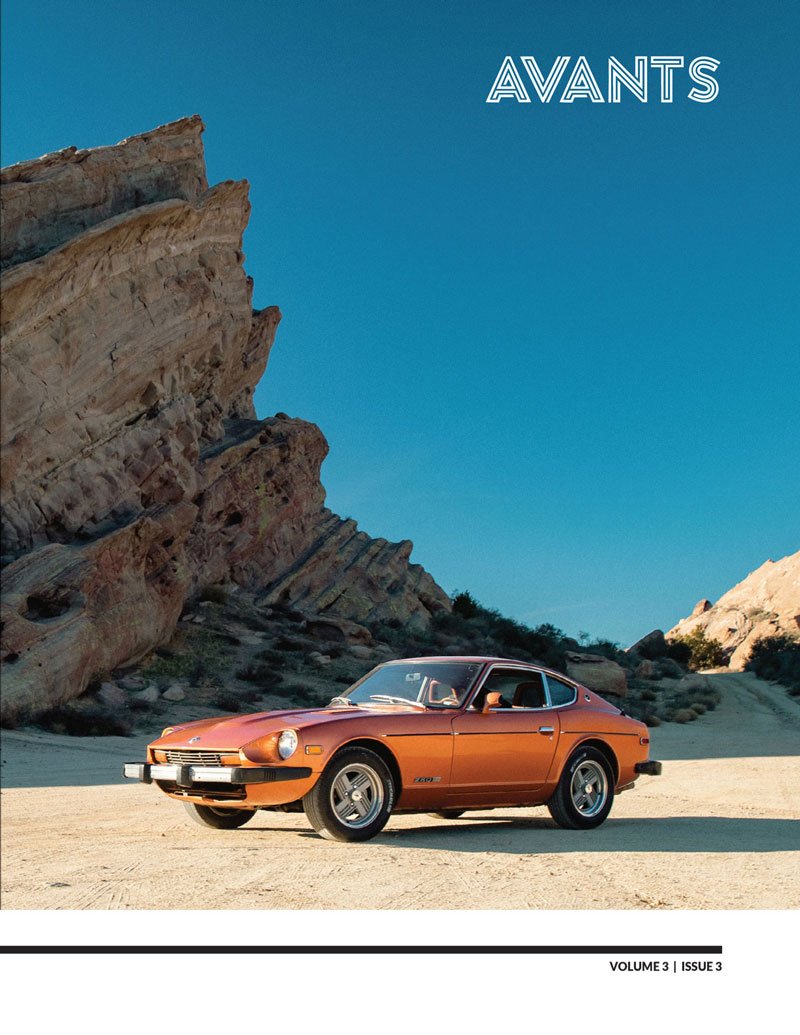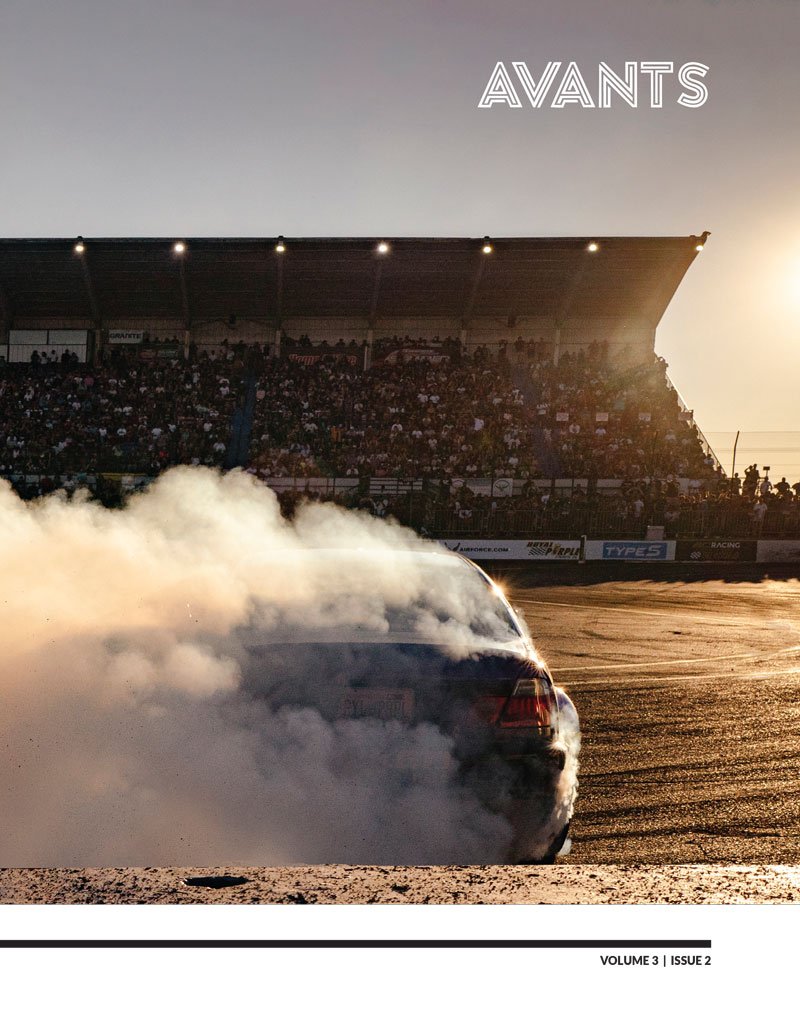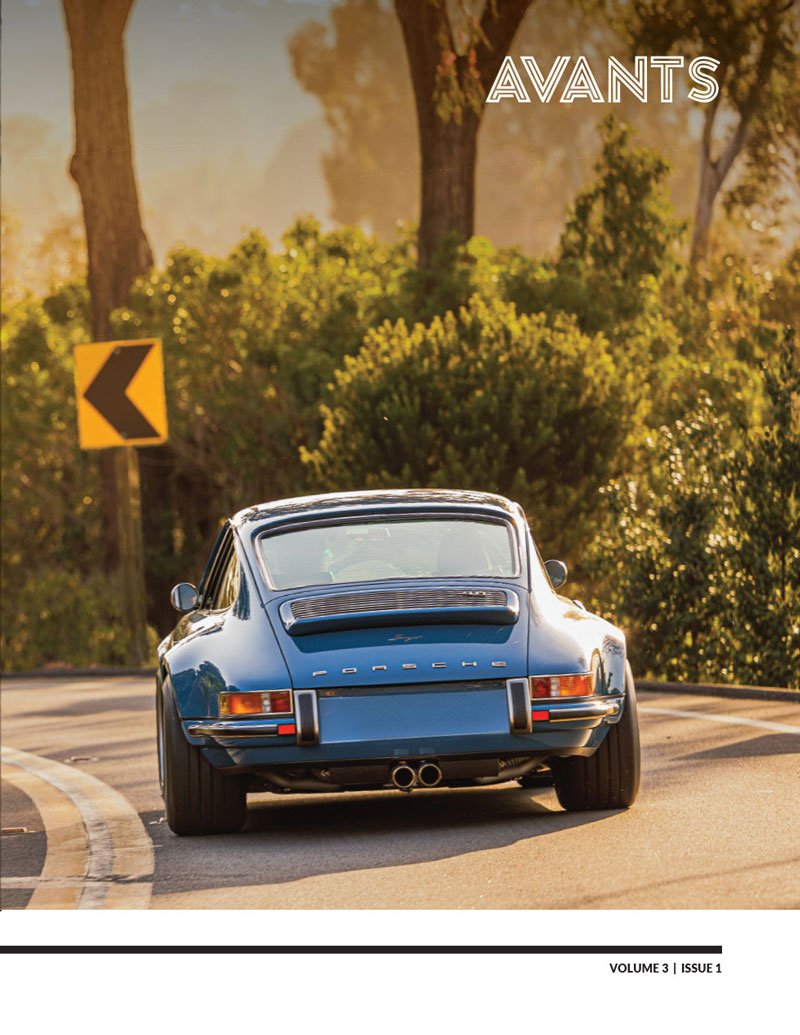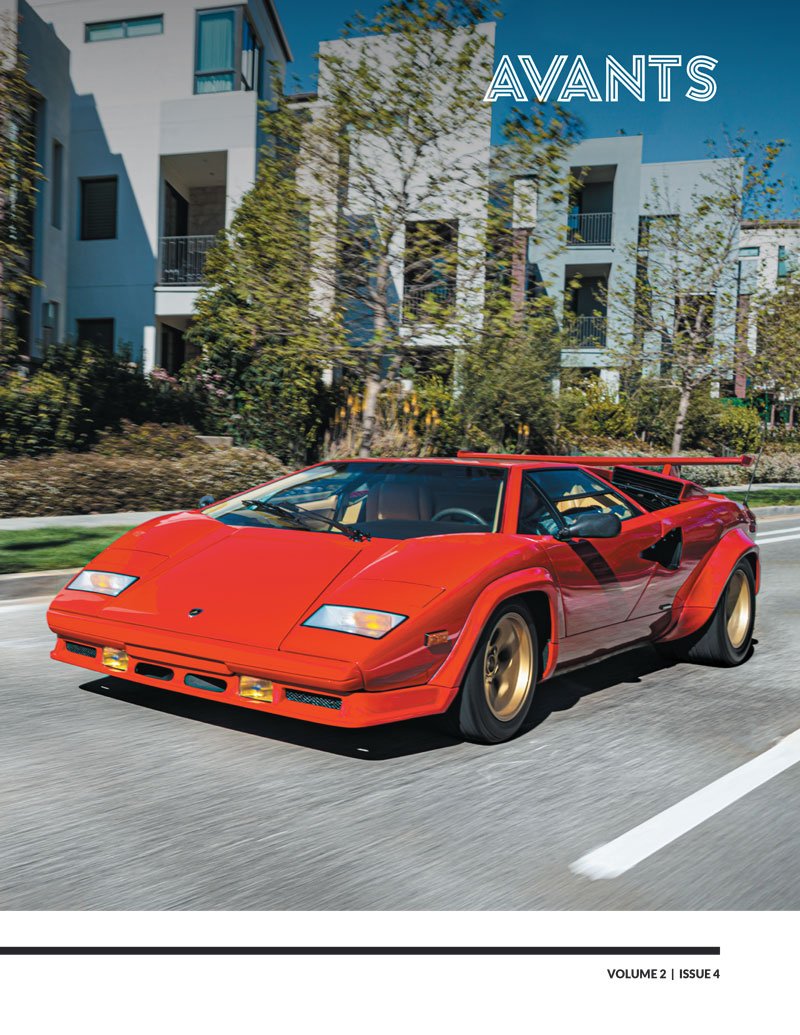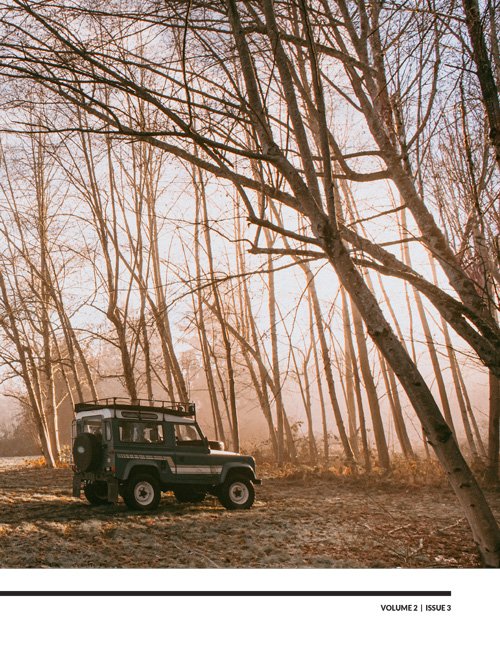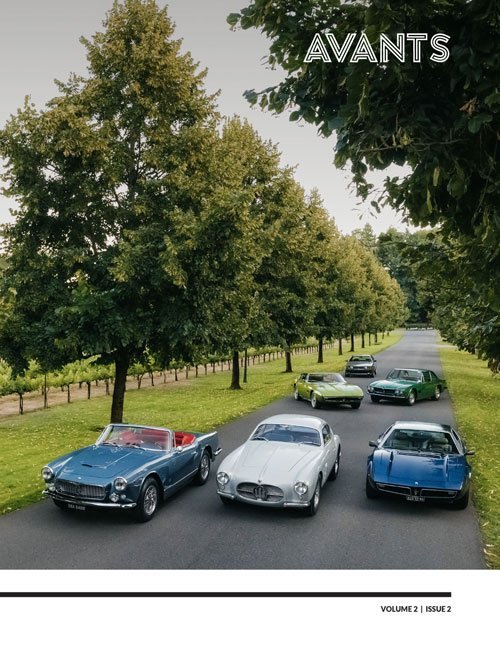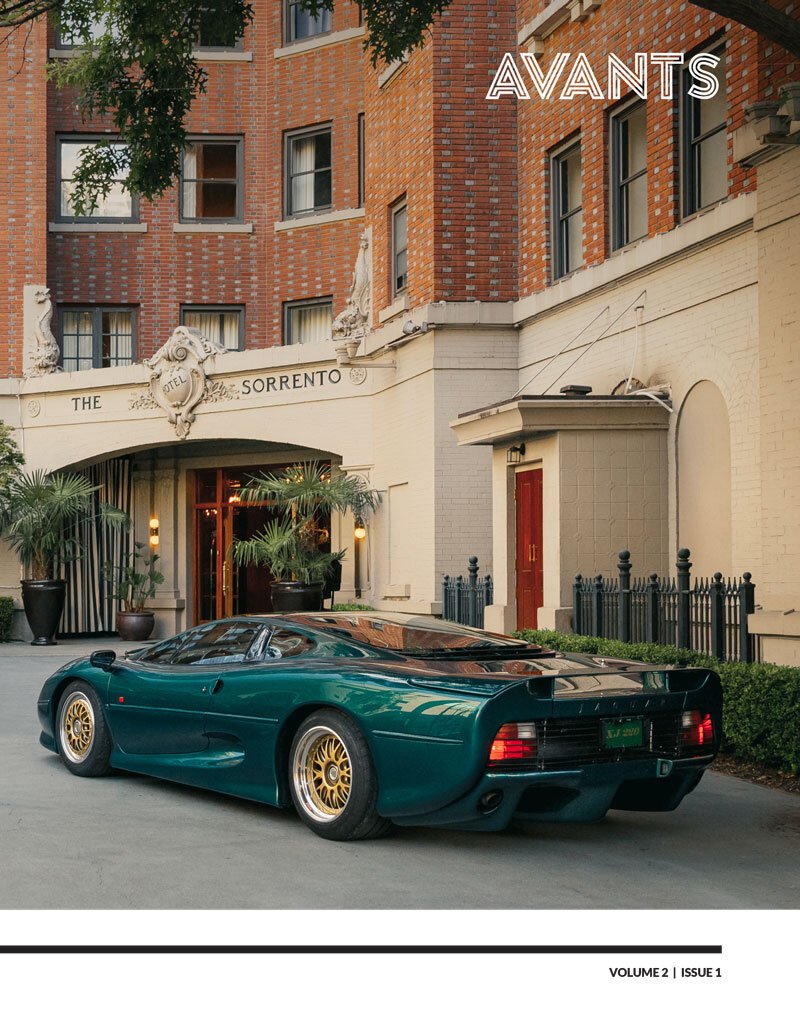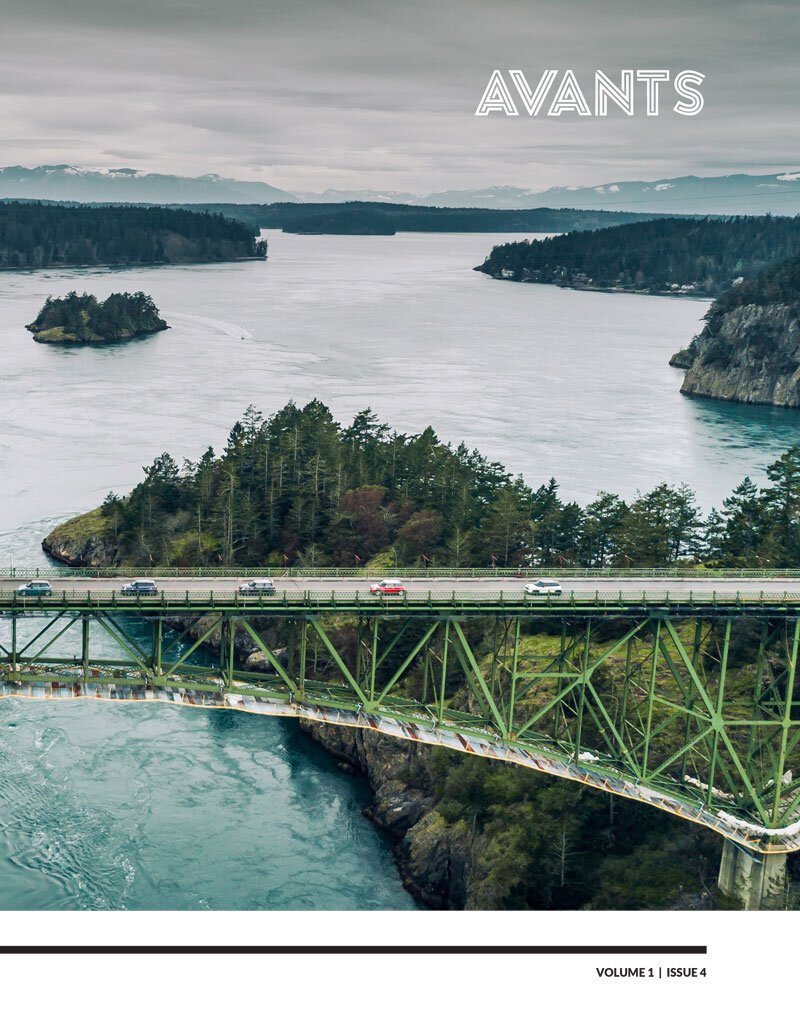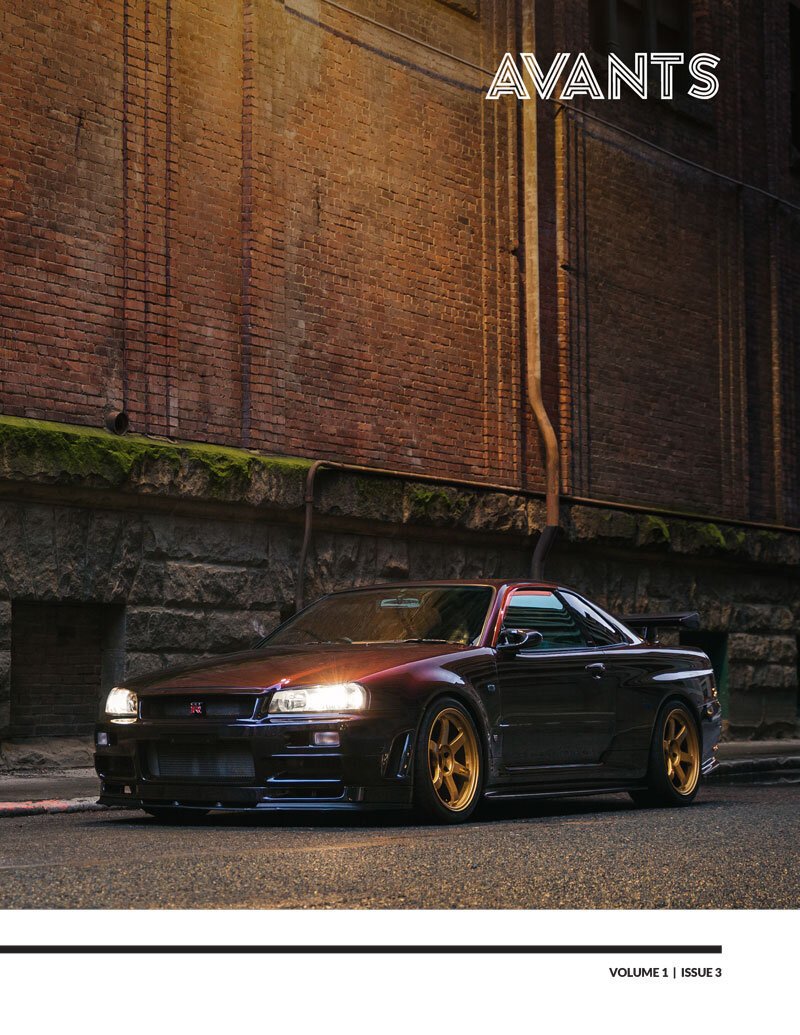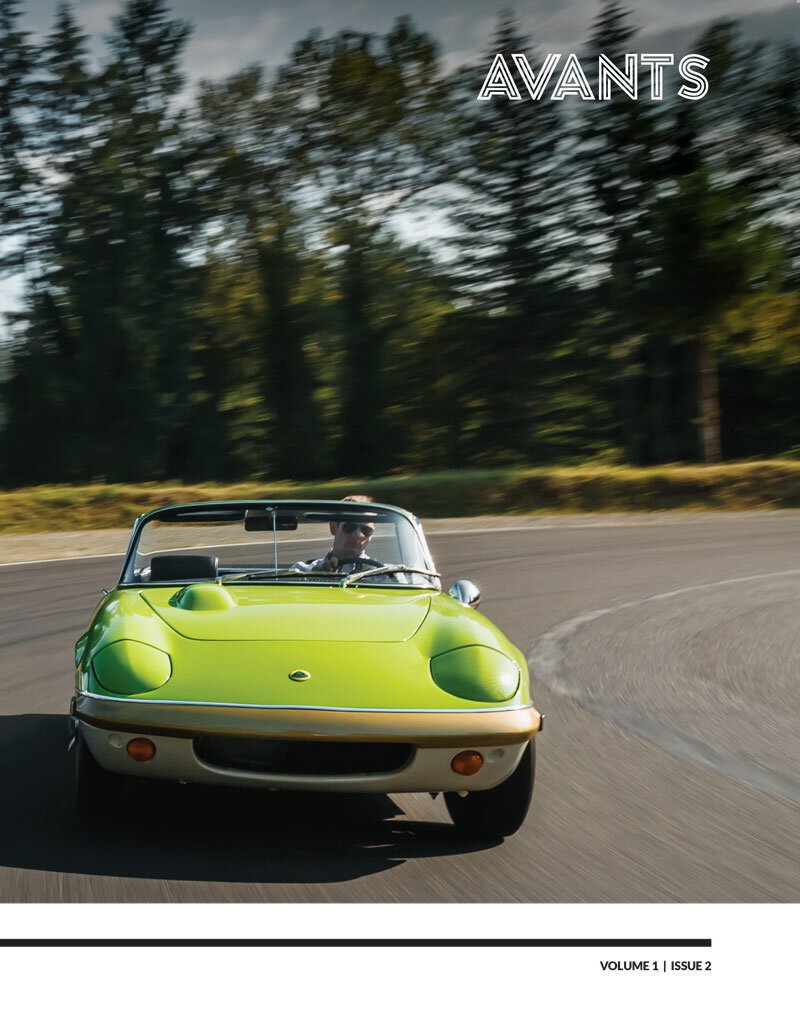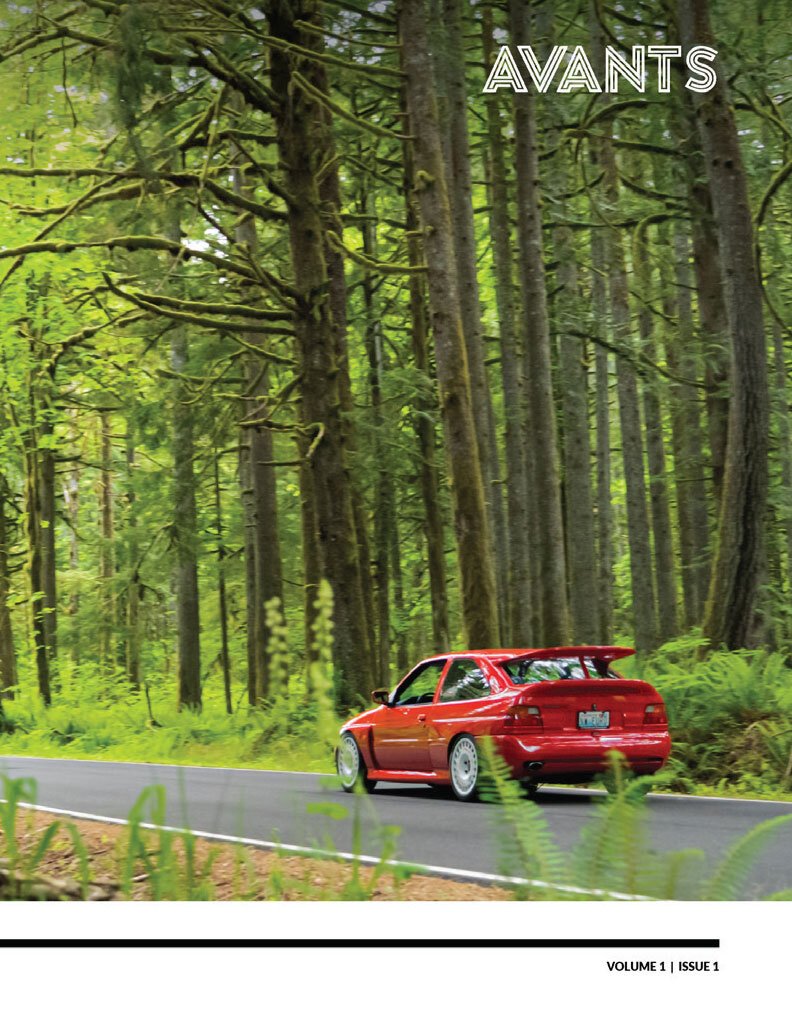






The Avants Magazine
The Avants Magazine
Beautiful photos and original stories highlighting the best of the automotive community. Every issue of the Avants magazine features over 140 pages of stunning photography with exclusive content covering enthusiasts, collectors, artists and more! From vintage to modern classics and off-road. Clean design with minimal advertising. A new standard for automotive print.
ISSUES
ARTICLES
Ferrari of Seattle’s Roberto Perrina strides into the temporary race car paddock built in the shadow of the Wynn Las Vegas hotel and casino. He pulls up his race suit and laces his driving shoes purposefully because he’ll soon be roaring through the illuminated streets of Las Vegas. And each gear shift will write another chapter in he and his brother Tino’s Book of Dreams for Scuderia 1999, the dealership’s official race team.
In a brisk nine months, Aaron Ross and his father, Duane Ross built their Remastered Meyers Manx in their family garage in Corpus Christi, Texas. However, the Ross’s spirit to fabricate, enjoy good ol’ fun, and “go big” is longstanding and multi-generational.
British photographer Amy Heynes (neé Shore) is fumbling with the Instagram live settings, to share her newest acquisition: a thin, custom-made leather camera harness. Heynes banters to the camera, part mentor, part pal, extolling the slender buckles and straps, explaining the ease of quickly shifting camera from hip to face. In captures of cars and their admirers, Heynes delivers an emotional authenticity rarely found in today’s automotive photography.
Arriving at Jason Cammisa’s garage in Northern California, I was greeted by the protagonist carefully tending to his laundry list of outstanding maintenance items for his beloved cars. It was fitting that the garage decor reflected his humorous on-screen persona, brimming with light-hearted paraphernalia, over-the-top lighting, and even a giant disco ball hanging from the ceiling. He often refers to his collection of cars as his children, and rightfully so given his obsessive care and the devoted relationship he’s built with each of them.
The NSU Prinz 1000 TT is a name that resonates with automotive aficionados who appreciate the blend of compact design, spirited performance, and German engineering precision. Born during an era when small cars were gaining popularity, the Prinz 1000 TT stood out as a pocket-sized powerhouse that left a lasting impression. For Ace Robey, owner of Retro Sporting, it is a treasured part of his car collection. A very uncommon and interesting find, full of detail and history. This less known German car with an air-cooled rear engine is part of Audi’s history and the first to have the famous TT badge. It was fully restored in 2021, with a 1.0-liter inline four-cylinder air-cooled engine, 40mm twin Webers, full stainless-steel exhaust, and Gaz adjust able suspension.
While many car manufacturers in the 1970s did their best to design cars that attracted one’s visual attention, there were many that missed the mark with painful consequences. The design of the 1972 BMW CSi ran counter to this notion. While some might describe it as understated and unassuming, its beauty lies in its simplicity.
Anyone active in West Coast car culture knows, or at least has heard of, Jay Ward. A frequent judge at the Pebble Beach Concours d’Elegance and occasional car reviewer for Automotive Addicts, an occasional contributor for Hagerty, Magneto, and Linkage magazines, as well as on Instagram posting as @dadsdailydriver, Ward rose to public prominence after working at Pixar on the Cars film franchise. But serving as creative consultant and creative director for one of the most beloved automotive movie series of all time didn’t happen by chance. A little luck factored into the story, sure, but as he tells it, the theme has always been cars.
To see into the future is a gift predisposed on few. Those who possess this natural intuition often change the way our world functions and orbits forward. From technology to style, from design to construction, there was always someone with an imminent vision. Fifty years ago in Frankfurt, Germany Rainer Buchmann saw the future of automotive styling and in 1974 along with his wife Kathrin established Buchmann & Buchmann, the legendary brand better known as bb-Auto.
An eyeful any way you look at it, the “Universal-Motor-Gerät” (universally applicable motorized device) or Unimog has been in production since 1948 and offered under the Mercedes-Benz banner since ’51. It is an agricultural appliance, a literal Swiss Army Knife that teams having numerous farm implements at the ready with the ability to roam out of the fi elds and into the village when the need arises. It’s a two-faced tractor for the ages.
George ‘Buz’ Ras III is not your stereotypical automotive repairman. He is six-feet, six-inches tall, athletic, and has flowing shoulder-length blonde hair. He was dressed for a night out on the town at his local saloon replete with a Stetson hat hanging at the ready when I met him at his Seattle Speedometer headquarters just outside Ellensburg, Washington.
The 944 debuted on Porsche’s turnstile at the 1981 Frankfurt Motor Show. The show car, designed by Anatole Lapine, drew heavily from the 924 Carrera GT prototype from 1979. The production 944 carried over the hardest hitting design cues from the 924 Carrera GT, namely the aggressive widened rear haunches, contoured front end treatment, and low-slung stance.
Barely running when he purchased it on Bring a Trailer in 2019, Ragalie has managed to breath new life into this Italian machine. The Mondial is unique to begin with—it has a slightly higher roofline than most Ferraris and it can accommodate up to four passengers—but Ragalie saw an opportunity to build something truly special, and he had enough experience to make it a reality.
It’s winter 1985, deep in a dark wet Welsh forest, the moon is glinting through the trees and reflecting off deep puddles. Something is stirring. A glimpse of lights in the distance, the raucous noise of a race engine becomes louder and louder. Suddenly, a flash of lights, a turbo whistle, tires plowing through the puddles, stones banging off bodywork—the cacophony peaks, then as quickly as it started, it simmers off into the distance. Nestled up on a bank with his friends, Steve Rimmer has just experienced his first taste of Group B rallying.
Three pre-teen kids sit on the curb of Front Street, lazily throwing small stones and bits of gravel at a nearby stop sign; one of just a few in town. They have no agenda, no plans, and no obligations other than to be home before dark to keep their mothers from scolding them or worse yet, grounding them from tomorrow’s prospective adventures. These are the children of Haines, “The biggest little city in Oregon” a sleepy town with a population of just under 400.
Growing up on the streets of Los Angeles, Hansel Echeverria went by the tagging name “Leen.” In today’s car culture, that name means something far more—and his uniquely styled lapel pins have appeared at events as wide ranging as the Fast and Furious-inspired Fuel Fest to the classic Porsche gathering known as Rennsport.
If you’ve ever seen an older Volvo in traffic, chances are it had IPD parts in it. The company is that prevalent in the Volvo culture in the Pacific Northwest and beyond. They are, and remain, the go-to company for replacement, maintenance, suspension and go-fast bits for Volvos of all ages.
Coming across a Porsche 959 in the wild is an exceedingly rare occurrence. Only a scant 337 copies were made. To come across a proper 959 Sport, of which just 29 were ever produced, conjures a sense of suspended disbelief, even in Stumptown with its catchy “Keep Portland Weird” slogan.
What do you get when you take an exclusive automobile—an ultra-rare, track-focused hypercar—and give it a bespoke paint job by a sought-after artist, auction it off to benefit one of the world’s premier automotive museums, and then have an innovative engineer build it into a street-legal driver’s dream? The result is a truly spectacular one-of-a-kind vehicle that has stories to tell even before its tires meet the pavement.
Beau Boeckmann is a unique breed. Shaped by the incredible growth of his family’s car dealership—something to which he has greatly contributed—and raised in a family that cherished honesty, loyalty, and character, he has helped continue to grow the business into the largest Ford dealer in the world while incorporating a multitude of brands ranging from Mazda to Aston Martin, Land Rover to Porsche.
Scott Keogh remembers the lightbulb moment clear as day. A crisp summer afternoon, taking his children to the beach in the family VW ID.4, sun angled just right, diffused with mist off the sea. The only other car in the parking lot: a classic International Harvester Scout.
Unusual. Quirky. A little different. Those are the typical words people will use when describing a Saab. Then in the same breath they will use words like well-designed, safety, and performance. Saab people, like the cars, are a little different.
If you stop someone on the street and mention the Ford Escort, it might conjure up the image of an underpowered metallic-green compact, missing a plastic hubcap. Outside the U.S., the name Escort evokes the image of a rally car flung fully sideways, Cosworth engine screaming at 9,000 rpm, twin firehoses of gravel bursting from the rear tires.
Every decade has certain automobiles that represent the audaciousness of the era in which they were made. For 1980s Los Angeles, the vibe was driven by celebrities with big hair, loud neon clothes, loud music, lavish houses, wild parties, and vast amounts of cash to burn.
When I proposed writing a profile on Larry Vollum, I had only heard of the Portland resident and whispers of an impressive, meticulously curated, and well-driven car collection. Based on the cars I had heard about and the people who spoke highly of him, I felt compelled to learn more about him.
Brionna Lynch is out to prove something. She doesn’t want to be known as the best female stunt driver or best African American stunt driver. She wants to be known as one of the best stunt drivers. Full stop. And she is well on her way.
Jake Langer has owned more than 70 Toyota Celicas in his lifetime. Passionate? Yes. Devoted? Yes. Obsessed? Perhaps. The year was 1989 when Langer bought a 1976 Celica from his dad for $600 and he hasn’t looked back. He wrenched on it when it needed work, customized it, and kept it in his possession for 28 years. That’s passion.
During the 1950s and 1960s, Los Angeles—the “City of Angels”—was the epicenter of the romantic and alluring picture of California known around the world. It was the home of Hollywood, The Beach Boys, Hot Rods, and bikini-clad girls. And it was there, in June of 1959, from a small mom-and-pop L.A. storefront at 4077 West Pico Boulevard, that Honda began selling their very first products in the United States, under the name of American Honda Motor Co. Inc.
The joy that her 1990 Lexus LS 400 brings her is palpable. That’s because she has built something unique: a true automotive mashup, a luxury sedan meets an off-road machine in a way that wasn’t intended. That’s what makes the car so special. Her determination to make the Lexus her own manifested itself in something that feels familiar yet is entirely new, like a new song that you know you’ve never heard before, but it feels like life wouldn’t be the same without it.
When content is king, you can build an empire with six GoPros and a Canon 5D. Hoonigan started in 2010 as no more than a t-shirt logo designed in a New York City apartment. Eleven years later, the brand exists as a motorsport powerhouse occupying half a city block in Los Angeles.
In my day, the standard advice from family, friends, and educators was simple. Get an apprenticeship and learn your craft. Or go to college and get a career. But a minority of people struggle with such limited options, knowing that neither feels right, sensing there have to be other ways. Often perceived as lazy, rebellious, or plain cantankerous, such iconoclasts are forced to rely on their determination and clarity of thought to find their path.

Unique Stories
Unique Stories

Classic Design
Classic Design

Rad Cars
Rad Cars

Beautiful Photos
Beautiful Photos







